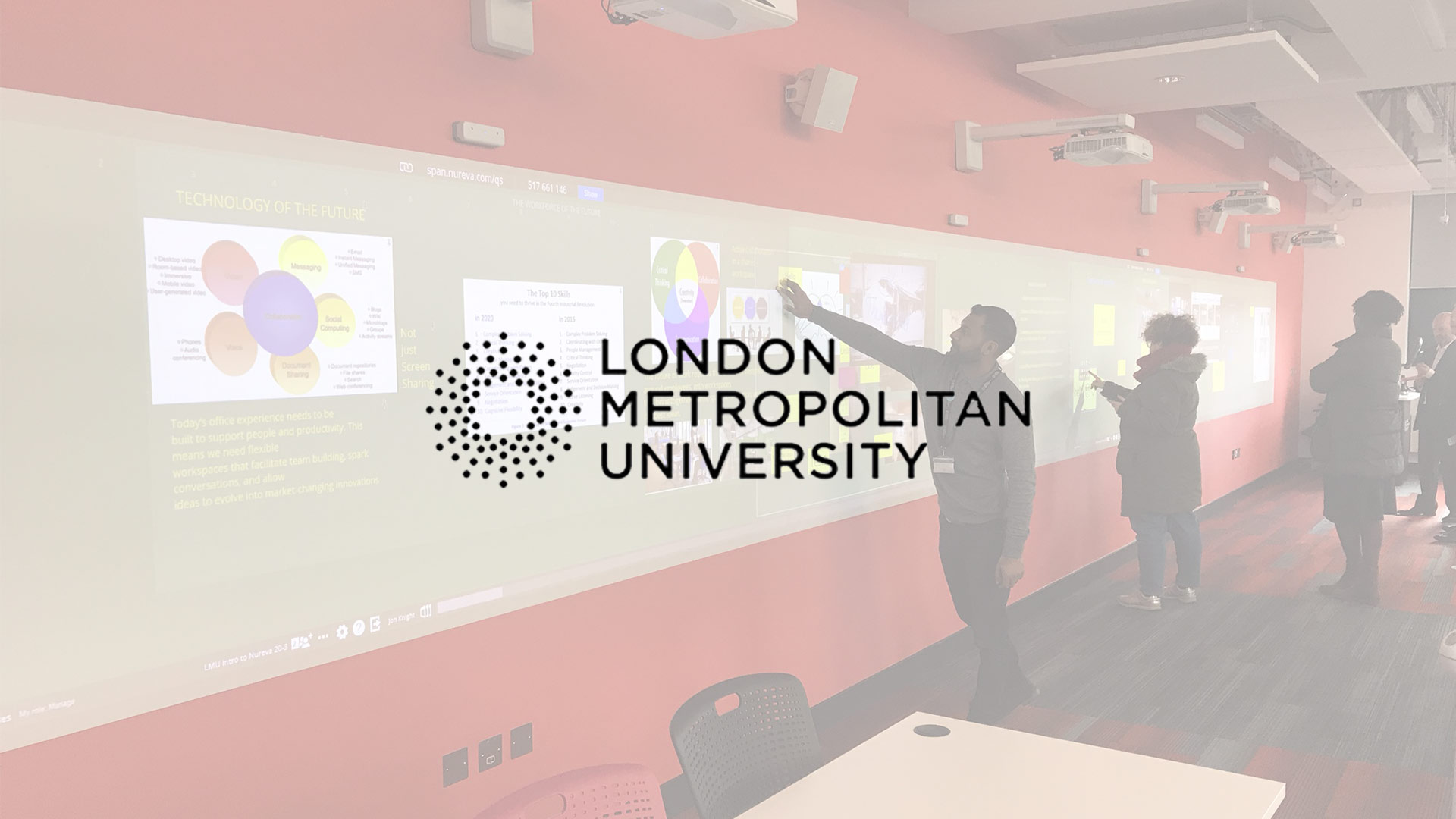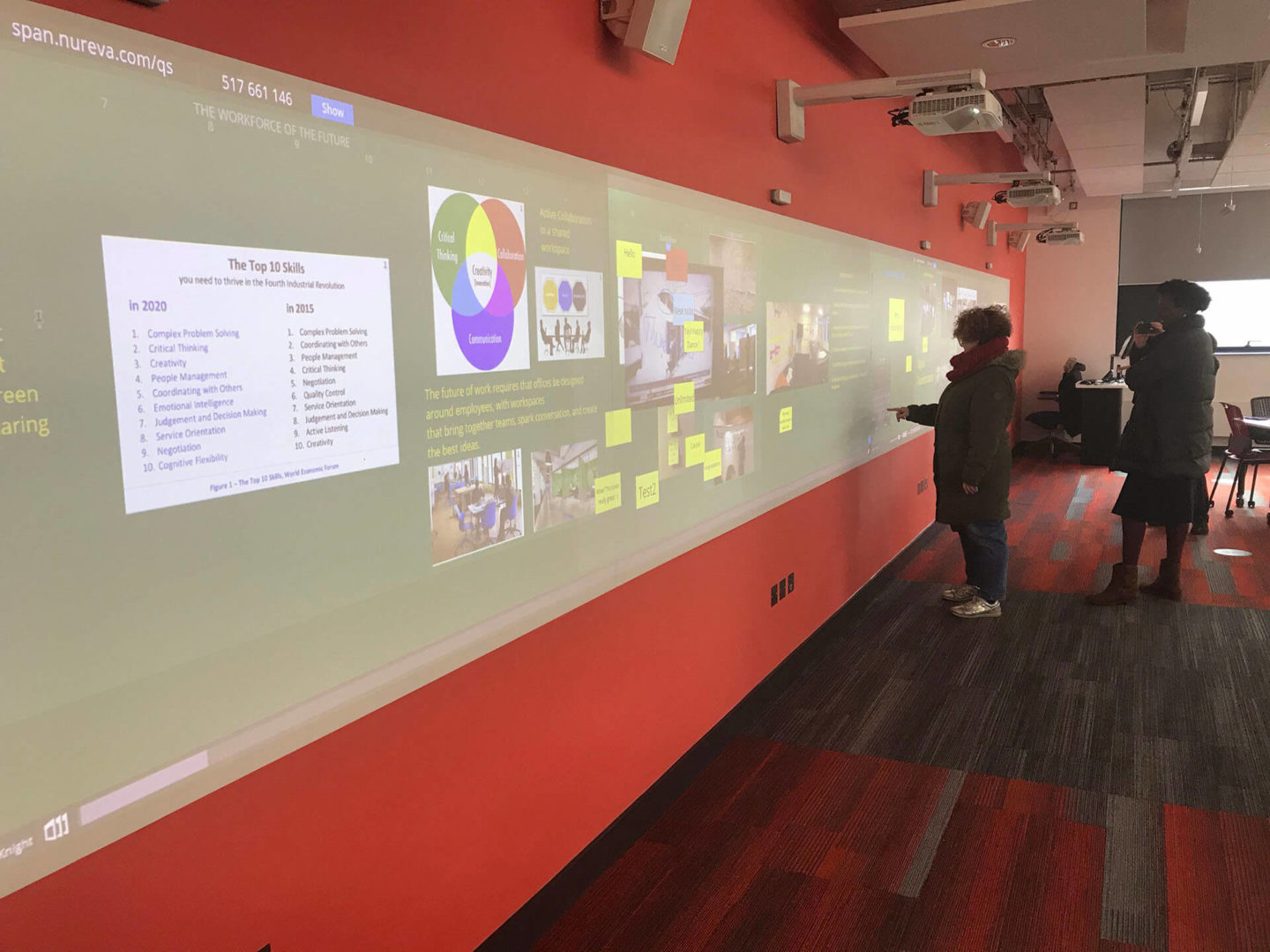
London Met
Previously considered more relevant for schools, active learning has gained wide adoption in the higher education sector in recent years. Indeed, it was named as a top strategic approach by Educause in 2017. It’s a style of learning that includes working in groups, articulating explanations, and ‘doing’ rather than just passively listening.
It’s been embraced by the London Metropolitan University, who has developed Active Learning Suites (ALS) as part of two strategic programmes. These suites are now delivering digital ideation technologies to support productive, effective and innovative idea generation, with an incredibly positive effect on student achievement.

Pilot spaces were originally created in 2017 using several multi-touch screens. And whilst feedback on the spaces was universally good, it became clear that the 84” screens were just not large enough to engage the whole class.
Enter Span Workspace software from Nureva. It’s a solution that supports the creation of huge virtual canvases for students and lecturers to access simultaneously from a multitouch screen or via any device or platform. All participants, local and remote, can contribute any kind of media to the canvas and share their local screen with all contributors to the canvas, without the need for any client software.
A flagship ideation space was created, using Span Workspace software and Nureva Wall, a 12-metre-wide space using a WhisperTek surface and 4 Nureva WM210 projectors. This enormous canvas can be increased by around 8 metres of additional space by linking 4 Avocor F-8410 84” interactive displays that are in the room and can also be used independently on the same canvas, different canvases or as standard Windows PCs for normal classroom use.

Oliver Holmes is interim Director of Information Technology and Services at London Metropolitan University. He comments “the Span system is a crucial tool in the move towards active learning. The massive canvas means there is room to view every element of a project, supporting the students’ development of complex problem solving, critical thinking and creativity skills.”
Using Span means the university never runs out of space, as multiple projects can be managed from the one wall. It becomes a central collaboration space, with tutors just switching between multiple projects for different groups.
Ideation is the creative process of generating, developing and communicating new ideas. It’s a critical skill in almost every discipline and is best engaged in an active manner. Span Workspace and Nureva Wall work so well in this space because the solution is ideal for digitising any kind of process.
Holmes enthuses “feedback from both students and staff has been amazing. The beauty of the Span system is that it’s so intuitive. It allows complex problems and processes to be broken down and displayed in a totally accessible and understandable way, by taking the best of familiar elements we’ve used in the past, such as sticky notes, and transforming them into 21st-century learning tools.”

And whilst the original pilot ALS received very positive feedback, since developing the ideation space, including the Span solution, things have really taken off.
Says Holmes, “including the Span system at the heart of the ideation space has taken it to another level. It’s totally revolutionised the way students and staff can collaborate, supporting the brainstorming and ideation activities that are so crucial to engaging students in a more meaningful way.”
The Span Workspace software and Nureva Wall Solution was supplied and supported by distributor Ascentae and was part of a larger project installed for the university by integrator Reflex Ltd.